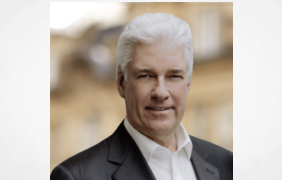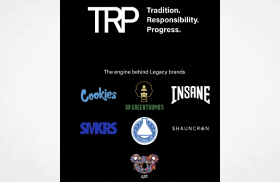In May 2022, an assistant to Rivne real estate agent Oleh Ukhnalyov-Yaroshevych received a call: “We are looking for a commercial property of 4- to 8,000-square-meters and 700 hectares of land to rent,” the client said.
They were looking to relocate from Irpin, the Kyiv region city liberated from Russian occupation only a month prior.
“But if we don’t find anything, we’ll stay,” the client added.
The client, who turned out to be investor Andrii Mykytiv, co-founder of Ukrainian fabric manufacturer, K-Tex, sounded relaxed, despite, at the time, rumors running rampant that the Russians were planning another advance on Kyiv.
Less than a year later, K-Tex would end up buying the Volodarsko-Volyn flax factory in the village of Rijany, Zhytomyrska region. Its previous owner, Michel Tereshchenko, was an ancestor of a prominent entrepreneur and philanthropist family in 18th-century Ukraine. The new business took the village’s name, adding the Chinese word for hemp – “ma” at the front.
Two years later we were sitting in the office of Ma’rijany Hemp Company.
Its headquarters is in Kyiv’s Nyvky Park – an intensely green place surrounded by forest. Before entering through the modern office’s glass doors, you pass by a lake with ducks and old men fishing.
Mykytiv tells me that his company plans to grow hemp, then process its stalks and produce fibers for the textile industry. The wide uses of hemp fiber dappled our conversation – clothes, paper, parachutes, military uniforms, upholstery, furniture fabrics, bed sheets, rope and more. The leftovers – “shives” or “hemp hurds” – can be used for insulation boards and horse bedding.
But the hemp business requires a lot of patience. In Ukraine, that goes double because war creates instability – and there’s the usual bureaucracy.
“You can register your business tomorrow, but spend three years to get the necessary license,” Mykytiv said, a problem commonly heard voiced by Ukrainian entrepreneurs at business conferences.
Industrial hemp production in Ukraine is still regulated in part by the Ministry of Internal Affairs. Its officials check the amount of the psychoactive component tetrahydrocannabinol (THC) to make sure it’s not being used for narcotics. They can also confiscate the hemp harvest if you can’t prove that you’re not going to use it for narcotics.
That said, Kyiv isn’t blind to hemp’s potential.
“We have two institutions funded by the state aimed at [researching] cultivating and breeding non-narcotic varieties of hemp.” Mykytiv said. “But they can’t sell it due to regulations.”
The idea to industrially cultivate hemp came to Mykytiv in 2019 when he and fellow K-Tex founder, Andrii Ilchenko, noticed that natural materials at the Techtextil exhibition were trending.
K-Tex, already in business for 20 years, was looking for new solutions to strengthen its market position in the textile industry.
The first idea was to recycle plastic bottles since the company uses PET (Polyethylene terephthalate) fiber in its production. But the trouble is this “raw material” – empty plastic bottles – isn’t so easy to collect. It’s scattered around forests, rivers, and garbage dumps.
But hemp is also good for the environment.
Mykytiv describes it as an “unpretentious” plant. Mankind’s been using it for the last 12,000 years, he said. The best part is, it grows fast and doesn’t ask for a lot of water, unlike cotton.
Cotton dominance in clothing manufacture has come at a cost. A single shirt made from the water-intensive plant can use up to 2,700 liters of water.
The Aral Sea in Central Asia, which was once the world’s fourth largest lake and home to 24 species of fish, is now completely dried up thanks to cotton.
But if hemp, which had once been widely used, is so good, why then did it fall out of fashion around the world? That answer depends on the location.
In the United States, hemp had been commonly grown prior to 1937, when Congress adopted the Marijuana Tax Act requiring a tax on the sale of cannabis. There, before most people knew what “marijuana” was, Harry J. Anslinger, the head of the predecessor organization to the DEA (Drug Enforcement Agency) convinced Congress that hemp production was dangerous because it could be used to grow the narcotic.
“Marijuana is the most violence causing drug in the history of mankind. Most Marijuana smokers are Negroes, Hispanics, Filipinos and entertainers. Their Satanic music, jazz and swing, result from marijuana usage. This marijuana causes white women to seek sexual relations with Negroes,” Anslinger argued to attentive ears back in 1937.
Ukraine, on the other hand, under the Soviet Union, didn’t stop hemp production out of fear that “reefer madness” would grip the nation.
Rather, according to the agricultural cooperative Ukrainian Hemp, going through the 1917 October Revolution, World War I, the Civil War, and the Holodomor – Ukrainian land that had been used for hemp cultivation got switched over to potatoes and other food crops because people were starving.
By the 1950s, hemp in Ukraine had become something of a forgotten memory. No longer in vogue around the world and no longer a source of inspiration for innovation in agricultural technology, the out-of-step plant was simply abandoned.
Now Ma’rijany hopes to revive the plant’s use. But to do so, it first had to revive a factory. The Volodarsko-Volyn flax factory hadn’t been used for 15 years and had to be tidied first – both physically and in its documentation. The old flax factory is still being reconstructed to accommodate both production equipment and raw material storage. Plans also include constructing a road junction.
Ma’rijany also needed to grow the hemp to begin with. The company had tried working with local farmers, but no one wanted to grow it, Mykytiv said. So, his company invested $7 million in agricultural machinery.
First, it bought seeds from a certified institution. It planted and sowed them for the first time last year – this, in order to get more seeds to grow its first proper production crop – which it hopes to harvest next year.
Ma’rijany’s commercial director, Ihor Didok – who had previously developed sales for Ukraine’s national drugstore retailer DETSE (ДЦ) before it was sold to Hong Kong-based AS Watson – already has an annual sales plan.
He said he plans to produce 650 tonnes of long hemp fiber, 700 tonnes of short hemp fiber, and 3,500 tonnes of shives.
Read more
https://www.kyivpost.com/post/33256


















